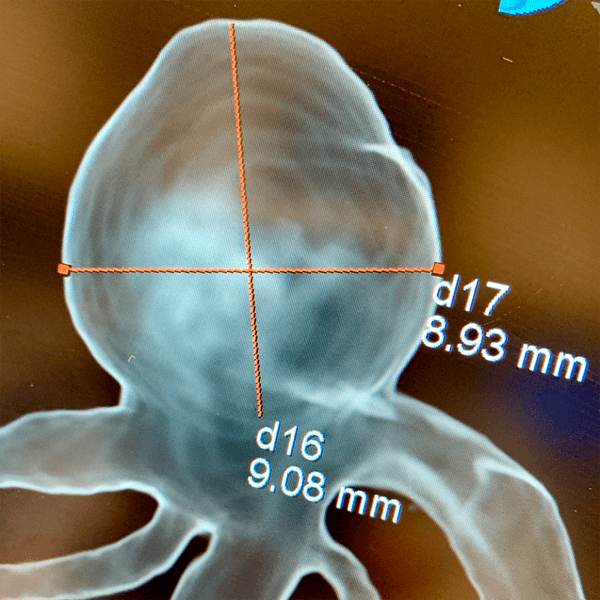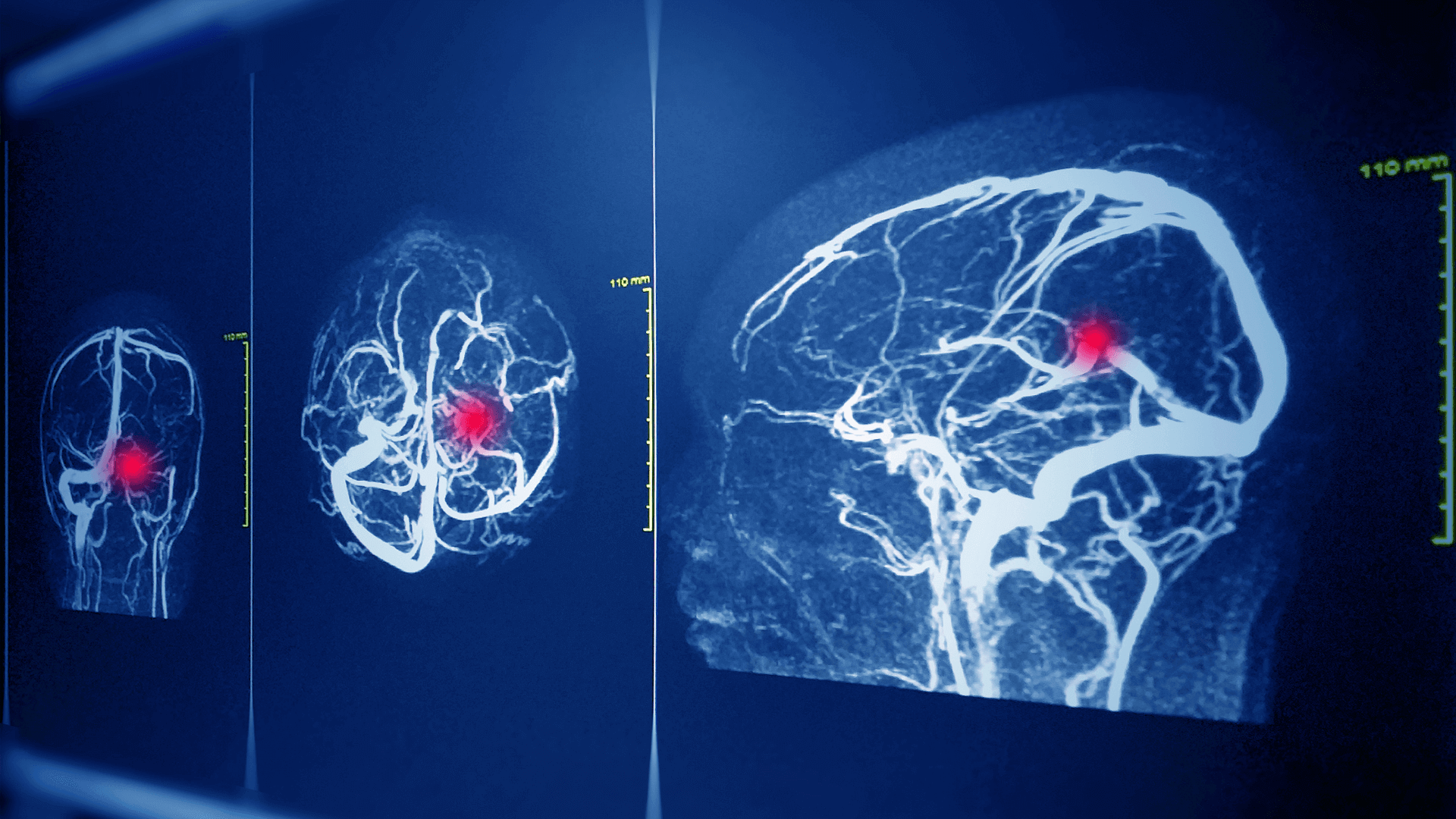Brain Aneurysm Surgery
A brain aneurysm is when a blood vessel of the brain forms a bulge. A brain aneurysm also referred to as a cerebral aneurysm grows slowly, often unnoticed by the individual.
If you or your loved one has been told you needed aneurysm surgery, chances are that you found out about your brain aneurysm before it ruptured, or because it has already ruptured.
A ruptured aneurysm is a life-threatening situation.
If an aneurysm ruptures it causes bleeding inside the brain, which is generally referred to as subarachnoid hemorrhage.
It’s a special kind of bleeding which occurs inside the fluid filled spaces of the brain, and this will require emergent aneurysm treatment, and possibly other treatments to relieve pressure in the brain. How your aneurysm gets treated will also depend on your overall health information, and medical condition.

For a patient with an unruptured brain aneurysm, a neurosurgeon will often recommend treatment to prevent blood flow into the bulge. Treated aneurysms prevent future rupture and a possibly life-threatening situation. Some intracranial aneurysms do not need treatment, usually because of their location or size (less or equal than 3mm).
However, if you or someone you know has been diagnosed with a brain aneurysm, you may be wondering about treatment options, and the pros and cons of a brain aneurysm clip versus coiling.
Aneurysm clipping is a surgery where the surgeon accesses the blood vessel directly by performing a craniotomy.
A craniotomy requires removal of part of the skull, then the brain folds are spread apart, and once the weakened wall of the artery and the brain aneurysm are identified, a metal clip is placed at the base of the aneurysm, cutting it off from the blood supply. The positioning of the clip is then confirmed, and once everything looks satisfactory, the skull is placed back on.
-
Clipping Is An Established Surgery
The clipping surgery has been used for decades to treat aneurysms in the brain, so its safety and effectiveness has been demonstrated long term. Clipping has been performed for long enough that studies have been done on outcomes in a large number of patients, and the procedure has been fine-tuned for even better outcomes.
-
Clipping Can Treat Most Aneurysms
Clipping surgery can be performed on most types of aneurysms, even those that have already ruptured. The clipping procedure can also be done on aneurysms that are considered difficult to treat, such as those with a wide neck at the base.
-
Clipping Lowers the Risk of Recurrence
Well-clipped aneurysms have an extremely low risk of redeveloping, so for many patients, the clipping procedure successfully resolves the aneurysm. This means that for many patients, especially younger ones, the chance of a recurrence of the aneurysm is very low.
-
Clipping Is An Invasive Surgery
Although clipping has been shown to be a safe and effective way to treat aneurysms, it is an invasive procedure that requires opening the skull.
-
Clipping Requires a Longer Recovery Time
Since clipping is an invasive surgery, recovery typically takes longer. Without complications, recovery from a clip surgery performed on an unruptured aneurysm can require a two to a five-day hospital stay and 3-6 weeks of recovery at home. If the procedure was performed on a ruptured aneurysm, recovery can take considerably longer.
Endovascular coiling is a procedure where the aneurysm is accessed through an artery in the upper thigh or the wrist.
Using x-ray imaging and a special dye to guide a catheter to the site of the aneurysm in the brain, a hollow tube is placed inside the aneurysm, through which small coils are place, one at a time, into the aneurysm, until the pouch is full and the coils compress into a small metal ball. A clot will ultimately form around the coils, and blood will no longer be able to flow into the aneurysm, reducing the risk of rupture. Coiling can also be used for a ruptured aneurysm.
-
Coiling Is Less Invasive Than Clipping
Aneurysm coiling requires only a single incision in the leg or wrist to access the body, so there is no need to open the skull or brain. This incision typically heals quickly with minimal scarring.
-
Coiling Has a Shorter Recovery Time Than Clipping
Patients generally recover faster. With no complications, patients typically spend a day or two in the hospital, and can return to most normal activities within about a week. Therefore, it may be a better option in high-risk patients, such as the elderly or those with certain health conditions.
-
Coiling May Require Blood Thinning Therapy
Both before and after a coiling procedure, patients must take one or more blood thinning medications to reduce the risk of blood clotting. Depending on the circumstances, patients may need to take these medications for long periods of time after the coiling procedure.
-
Tools Can Have Risks
During a coiling procedure, surgeons use x-ray imaging and dyes, to guide the placement of the coils. That exposes a patient to risks from radiation for the duration of the procedure, or to allergic reactions to injected dyes.
-
Coiling Alone May Not Resolve the Aneurysm
In some cases, coiling alone may not be enough to treat the aneurysm successfully. To resolve the aneurysm, more coils or a stent may be needed to support the coils and keep blood vessels open. About 80% of all brain aneurysms can be treated with a coiling or newer techniques, and the rest may need clip surgery or have untreatable aneurysms at this time.
When considering treatment, there is no replacement for consulting with a neurosurgeon who specializes in cerebrovascular diseases.
There are nuances to every individual patient and case, and your situation is wholly unique.
If you would like to get an opinion from our highly qualified neurosurgeons, we are here for you.

About Dr. Dorothea Altschul
Dr. Dorothea Altschul is an accomplished neurointerventionalist in North Jersey and is the Clinical Director of Endovascular Services at Neurosurgeons of New Jersey, practicing out of their Ridgewood office located on East Ridgewood Avenue.
Please call today to schedule a consultation with me. (551) 284-3265
Request a consultation with Dr. Altschul

